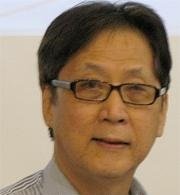日本最近宣布将把福岛核电站核事故的废水排放到海洋中。这计划引起日本邻近国家的谴责。
作为回应,韩国召见日本大使提出严正抗议。韩国外交部副部长崔锺文谴责日本大使未透露废水排放计划细节,包括将倾倒多少被污染的水,以及释放的速度。他对日本在如何处理福岛核废水问题上缺乏与邻国商讨深表失望。
据韩国外交部官员说法:“我们的立场是,除非这对人们的健康和海洋环境产生何种影响有明确的评估,否则不应把废水排入海。”
去年,绿色和平组织报告说,福岛核电站的废水比日本政府所言的更为危险。在绿色和平组织发布的题为《遏制大潮2020:福岛放射性水危机的现实》报告中指出,据称经过处理的核废水仍含有“危险水平的碳14”,这是一种具有“可破坏人类DNA(脱氧核糖核酸)”的放射性物质。
日本绿色和平组织在最近文告中就指出:“日本政府再次令福岛人民失望。政府释放含放射性的污水进入太平洋是一项完全不合理的决定。其低估了辐射风险,无视明确的数据,即在核电站以及周围地区都有足够的存储核废水能力。日本政府没有选择通过长期储存和使用最好的技术减少核废水的辐射危害,而是选择了最简单方式,将水倒入太平洋。”
绿色和平组织也批评日本政府将有关的废水称为“处理水”,并给人们一种印象,这些废水只存有一种放射性核素──氚。自核电站10年前发生核泄漏事故以来,日本当局已储存了123万吨的核废水。
回想一下,10年前的2011年3月11日福岛核电站事故,是自1986年切尔诺贝利核事故以来最严重的核泄漏事故。根据国际核事件分级表(INES),该事故被列为7级,是唯一与切尔诺贝利核事故同列严重的等级。重要的是,事故发生后对大气层和海洋的辐射量进行评估时,包括核电站管理人员在内的专家估计,清理和净化受灾地区的过程,将需要30至40年。
值得关注的是,在日核废水排放上,唯一支持日本立场的国家,就是太平洋另一端的美国。
中国的回应
除韩国外,中国也非常关注日本计划将经过处理的核污水排放到周围水域。北京称日本计划是“极不负责任”,呼吁日本与邻国和有关各方进行磋商。
最近,中国外交部发言人提出了新奇的建议,既然美国认为福岛核废水是安全的足以将其排入日本周围的海域,那华盛顿应把这些放射性废水运回美国。
中国外交部发言人华春莹最近的推文中指出:“日本和美国声称,福岛核电站处理过的核废水符合国际安全标准,甚至可以饮用,那为什么他们不自己留起来用呢?或者将其运到美国?”
她的推文上还附上漫画,展示核废料将如何影响饮用水和人类健康。华春莹随后也发表推文说,任何人在饮用日本处理过的核废水之前,最好应让国际相关机构进行评估其安全性。
Quad应出手协助
关于美日如何更好地解决这一问题,我有另一个建议。最近,美国建立的一个新联盟,将这作为其在亚洲的势力平台。在特朗普和拜登的领导下,美国正领导著一个包含印度,澳洲和日本组成的印度太平洋战略集团,称为“四方安全对话”(Quadrilateral Security Dialogue,简称Quad),以作为亚洲“北约”防堵崛起的中国。
“四方安全对话”成员国声称,他们是基于规则的全球秩序倡导者,以保护民主,它们将为和平与繁荣提供基石。但是,这些都是空话。
在第一次会议上,“四方安全对话”为了争取到本区域舆论支持,四国同意展开疫苗生产计划,以在2022年时产出10亿剂疫苗,供区域用途。在此计划下,印度将通过美国和日本的资金,提高其疫苗生产能力,以生产美国强生公司的单剂疫苗,而澳洲将负责运输和后勤事务。
尽管,一些人会认为,这是美国针对俄罗斯和中国进行的疫苗战之一,但如果这计划确实能让本区域国家获得免费或低成本疫苗,这一举动是值得赞扬的。
另一项“四方安全对话”组织成员国可即刻采取的行动,以支持其所强调的主张,即维护本区域国家的最大利益,美澳印也应协助日本,允许他们认为日本所谓“安全”的核废水在本国海域释放。
美国、澳洲和印度都有广大海域,可以处理这些大量的污水。这比他们认为对亚太国家至关重要的,新冠疫苗、气候变化以及诸如“新技术带来的挑战”之类各种共同课题上,更能赢得掌声。否则,“四方安全对话”组织将被视为一个一心反华的俱乐部,其不仅是维护美国霸权的工具,而且是一个积极致力于在世界范围内引发新冷战的组织。
《日本核废水:美澳印何不出手?》(The Quad to the Rescue with Japan’s Nuclear Wastewater)原文:
Recently Japan announced that it would be releasing the wastewater from the meltdown at the Fukushima nuclear plant into the ocean. This plan has met with strong condemnation by Japan’s neighbors.
An immediate response came from South Korea which called in the Japanese Ambassador In Seoul to protest the decision. The country’s deputy foreign minister not only chastised the Japanese government for not being forthcoming with details of the plan to release the water, including how much of the contaminated fluid would be dumped and how quickly it would be released. He also expressed disappointment over the lack of talks between Japan and neighboring countries on how to dispose of the water from Fukushima.
According to a South Korean foreign ministry official
“Our position is that a decision should not be made unless there is a clear assessment on what impact it would have on people’s health and the marine environment”.
Last year, Greenpeace reported that the wastewater from the plant was more dangerous than the Japanese government had suggested. Their publication titled ‘Stemming the tide 2020: The reality of the Fukushima radioactive water crisis’ noted that the supposedly treated water still contained “dangerous levels of carbon-14,” a radioactive substance that has the “potential to damage human DNA.”
In its most recent press release, Greenpeace Japan stated:“The Japanese government has once again failed the people of Fukushima. The government has taken the wholly unjustified decision to deliberately contaminate the Pacific Ocean with radioactive wastes. It has discounted the radiation risks and turned its back on the clear evidence that sufficient storage capacity is available on the nuclear site as well as in surrounding districts. Rather than using the best available technology to minimize radiation hazards by storing and processing the water over the long term, they have opted for the cheapest option, dumping the water into the Pacific Ocean.
Greenpeace also criticised the Japanese government for describing the water as “treated”. More than 1.23 million tons of wastewater has been accumulated by the Japanese authorities since the plant’s meltdown more than a decade ago.
To recall, the Fukushima nuclear plant accident on 11 March 2011 was the most severe nuclear accident since the Chernobyl disaster in 1986. It was classified as Level 7 on the International Nuclear Event Scale (INES), joining Chernobyl as the only other accident to receive such a serious classification. It is significant that in the aftermath assessment of the radiation discharge into the atmosphere and ocean, experts including from the plant management estimated that it would take 30 to 40 years to clean up and decontaminate the areas affected by the disaster.
It is also significant that the only other country supporting the Japanese position on the planned discharge is the United States which is on the opposite side of the Pacific Ocean and contaminated water discharge.
China’s Response
Besides South Korea, China has also condemned the Japanese plan to release the treated contaminated water into the surrounding waters. Labelling the plan as “extremely irresponsible”, Beijing has also called for consultations with neighboring countries and relevant parties.
More recently a Chinese Foreign Ministry spokesperson has made the novel suggestion that Washington should take Fukushima’s radioactive wastewater given its insistence that the water is safe enough to be disposed of into the seas around Japan.
In a recent tweet, Chinese Foreign Ministry spokeswoman Hua Chunying noted:
“Japan and the US claim that the treated nuclear waste water from the Fukushima nuclear power plant is in accordance with international safety standards and even drinkable, then why don't they keep the water for themselves? or maybe ship it to the US?”
Hua followed up by tweeting that it would be better to have an international assessment of the safety of Japan’s nuclear wastewater before anyone drinks it.
The Quad Can Help Out
I have another suggestion on how the US and Japan can better deal with this problem. Recently the US established a new alliance as the centerpiece of its Asia power play. Under Trump and Biden, the US now leads a grouping of the US, Australia, Japan and India in an Indo-Pacific strategic bloc called the Quadrilateral Security Dialogue, or Quad, which is supposed to be an Asian Nato to act as a bulwark against a rising China.
The Quad nations have claimed that they are advocates of a rules-based global order to protect democracy and that they will provide the cornerstone for peace and prosperity. However these are empty words.
In its first meeting the Quad to win over public opinion in the region reported that they have agreed to a plan for vaccine manufacturing for the four countries to produce up to one billion vaccine doses by 2022 for use in the region. The plan envisages India ramping up its vaccine manufacturing capacity with financing from the US and Japan to make the single-dose vaccine from US-based Johnson and Johnson, and with Australia taking charge of shipments and logistical issues.
Although cynics see this as part of the vaccine war that the US is pursuing against China and Russia, the initiative is commendable if it does in fact provide free or low cost vaccines to the countries in the region.
There is another measure the Quad can immediately pursue. To further bolster their claim to act in the best interest of countries in the region, the Quad nations should assist Japan by agreeing to release the supposedly “safe” nuclear waste water in their own waters.
Australia, the US and India all have substantial coastlines to handle the huge volume of contaminated wastewater. They can earn themselves much credit for focusing on COVID-19, vaccines, climate change and the various assorted generalities such as “challenges presented by new technologies.” identified in their final communique as critical to Asia Pacific countries. Otherwise the Quad will be seen as an anti-China obsessed club that is not just a tool for the preservation of US hegemony but one actively engaged in stoking a new Cold War in our part of the world.
要看最快最熱資訊,請來Follow我們 《東方日報》WhatsApp Channel.


















